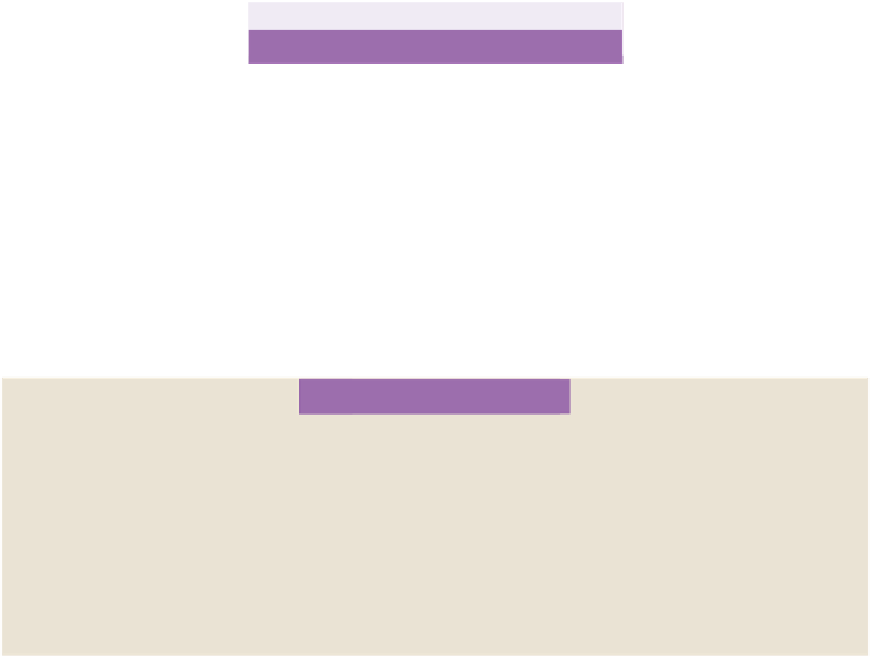Biology Reference
In-Depth Information
CHAPTER
8
From Li
pid Bilayers to Li
pid Rafts
OUTLINE
A. Development of Membrane Models
117
E. The Singer-Nicolson Fluid Mosaic
Model
122
B. The Danielli-Davson Pauci-Molecular
Model
118
F. Simons' Lipid Raft Model
125
C. The Robertson Unit Membrane Model 119
Summary
127
D. Benson and Green's Lipoprotein
Subunit Models
References
128
120
A. DEVELOPMENT OF MEMBRANE MODELS
By 1935 all of the basic elements were in place for someone to propose a realistic model of
a membrane (see Chapter 2, also
[1]
). Comparing cell permeability measurements with solute
partition coefficients, Overton had suggested the lipid nature of a membrane and Gorter and
Grendel had proposed that there was the precise amount of lipid in the erythrocyte
membrane to exactly cover the cell surface twice. Thus, at least the erythrocyte membrane
was a lipid bilayer. In fact, the then obscure Gorter-Grendel paper implied that the membrane
was entirely lipid! Using trans-membrane electrical measurements, in 1925 Fricke correctly
determined that the hydrophobic part of a membrane was ~33
˚
thick. Also in 1925, Sumner
purified the first protein, urease. The prevailing opinion at that time was that biological cata-
lysts were small, hard to isolate organic molecules that were hidden in all the 'cellular junk'.
Although it took almost a full decade for the importance of protein catalysts (enzymes) to be
universally accepted, by 1935 it was obvious that proteins were to be a major player in under-
standing life. Proteins were soon found to be a major component of all membrane composi-
tional analysis. One readily measurable membrane property, surface tension, was severely
impacted by both membrane lipids and proteins. The surface tension of pure water is



